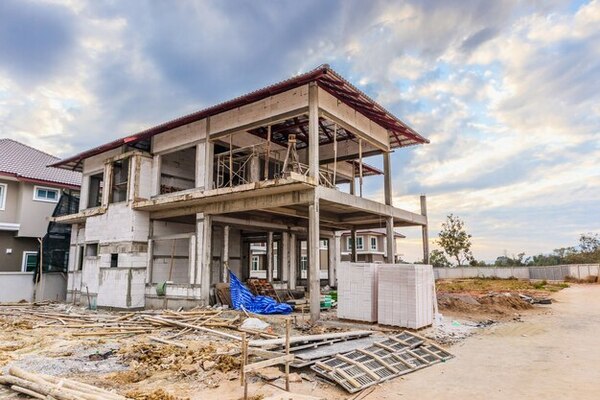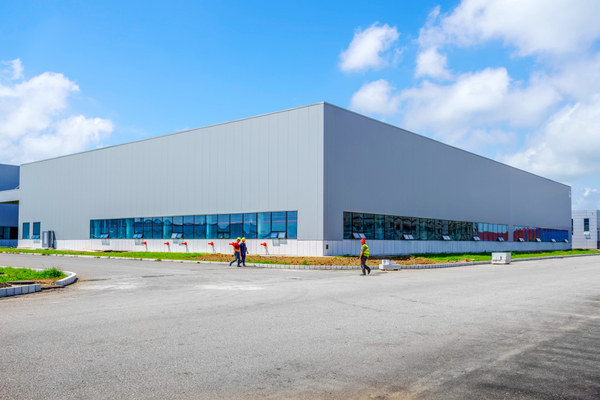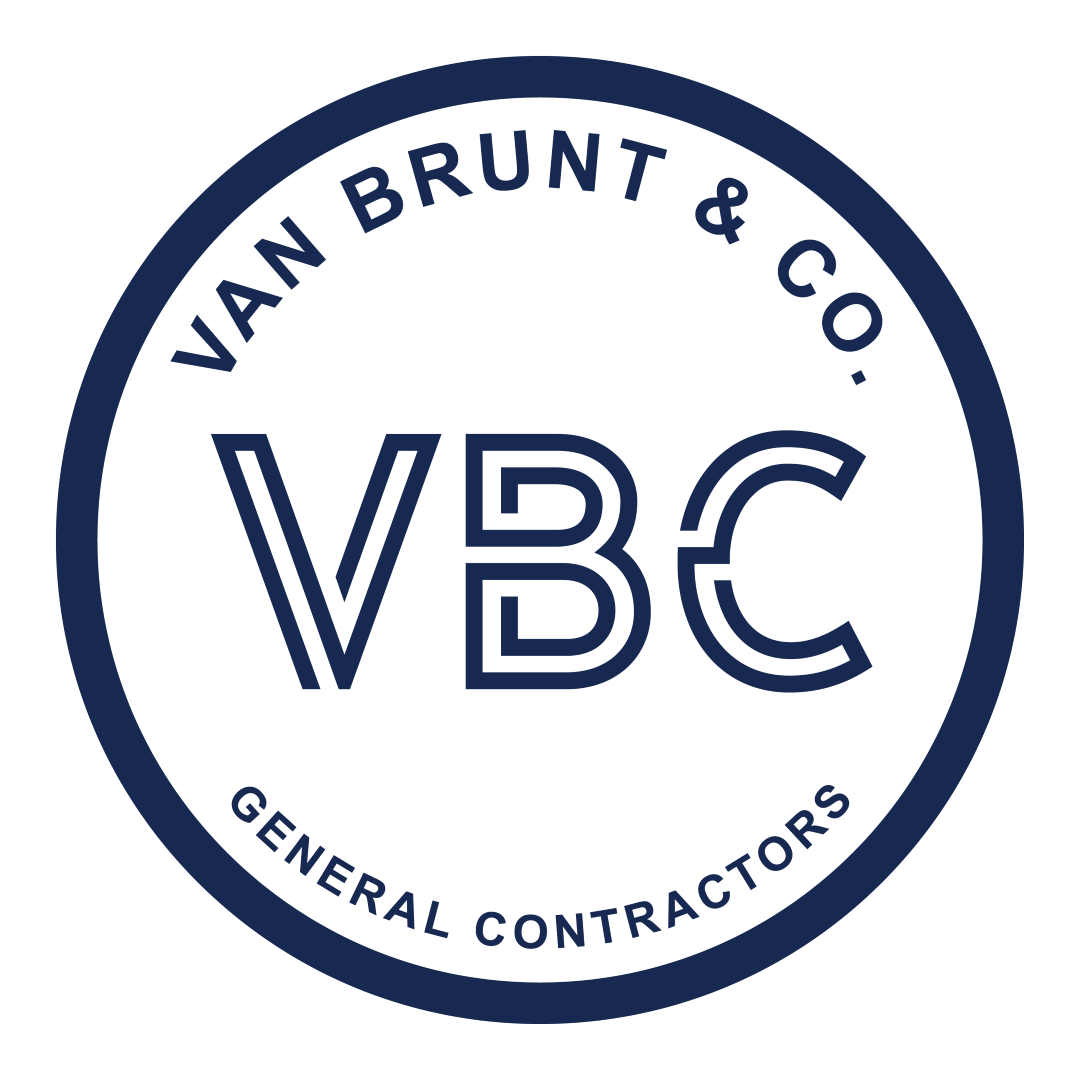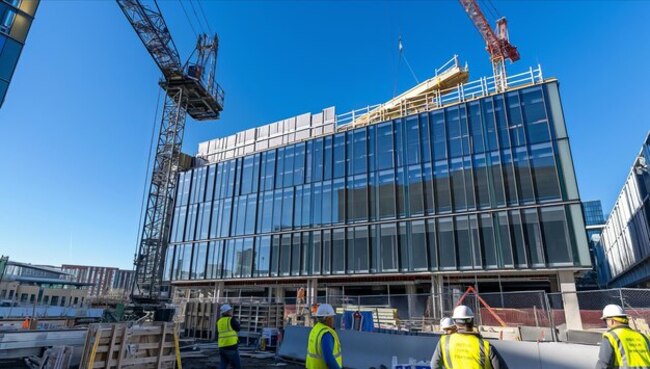In commercial construction, each project is tailored to meet specific business needs, creating functional, safe, and visually appealing spaces for various industries. Unlike residential construction, which focuses on personal living spaces, commercial projects range from small retail stores to expansive office buildings and industrial facilities, requiring detailed planning and coordination among architects, engineers, and contractors.
Commercial construction projects vary in scale, each presenting unique challenges. Small-scale projects might involve simple renovations, while large-scale developments could include complex, ground-up construction. With distinct materials, design considerations, and stakeholder involvement, these projects require a precise understanding of industry standards, ensuring the final structure is a safe and lasting asset for the business.
What is the Commercial Side of Construction?
The design, planning, and construction process for business-oriented structures is all about creating functional, safe, and appealing spaces that meet specific commercial needs. These buildings, available for sale or lease in the private sector, include a wide array of facilities such as office buildings, manufacturing plants, medical centers, and retail spaces.
Unlike residential construction, which centers on creating homes, commercial construction is tailored for business operations and can range from a compact retail store to an expansive corporate office. The main goal in commercial construction is to build spaces that align with the business’s operational requirements while prioritizing safety, functionality, and aesthetic appeal.
Commercial projects require a skilled team of architects, engineers, and contractors working in sync to complete the project on time, within budget, and in line with regulations and standards. Due to their complexity, these projects demand detailed planning and seamless coordination, making effective communication essential for successful completion.
The Three Scales of Construction
Commercial construction projects can be divided into three scales: small, medium, and large. Each scale brings unique characteristics, challenges, and demands. Let’s explore the essentials of each:
Small-Scale
Small-scale projects typically involve rebranding or updating the look of a space through interior renovations. This might mean remodeling a retail shop, refreshing an office, or upgrading a restaurant’s design. While these projects are compact, they demand a precise focus on detail and a clear understanding of the client’s vision to transform existing spaces into something impactful and fresh.
Medium-Scale
Medium-scale construction often involves expanding or restructuring existing buildings. Examples include adding an extension to a commercial building, renovating a shopping center, or converting a warehouse into modern office space. These projects require balancing the integrity of the original structure with new modifications to meet evolving needs.
Large-Scale
Large-scale projects are ambitious undertakings that typically start from scratch, like building high-rise offices, factories, hospitals, or major retail centers. These extensive projects need rigorous planning, a skilled team, and substantial resources, along with careful navigation of regulations to ensure the final structure is functional, safe, and aligned with the client’s requirements.
Each scale of commercial construction brings distinct challenges and opportunities. At Van Brunt & Company, we’re equipped to manage projects of every size, delivering successful results tailored to each client’s needs.
The Construction Process
The construction process is a carefully orchestrated, multi-stage journey that demands thorough planning, coordination, and skilled execution. Here’s an overview of each key stage:
Development
The journey begins with the development stage, where the client’s needs are assessed, project goals are set, and an initial budget is secured. During this phase, the project’s feasibility is evaluated, a site is selected, and preliminary designs are developed, setting a solid foundation for everything that follows.
Design
After development, the project moves to the design phase, where detailed plans, drawings, and models are created to give clients a visual understanding of the final structure. Architects, engineers, and designers collaborate closely to refine every detail, allowing the client to make any adjustments before the construction begins.
Construction
The construction phase is where the plans materialize. This stage involves organizing labor, sourcing materials, and ensuring the project remains on schedule and within budget, with flexibility to address adjustments as needed. Strong project management and attention to detail are critical at this stage.
Finished Product
After construction wraps up, the project reaches its final stage, where the team walks through the completed structure with the client to ensure satisfaction. This final step confirms that every requirement is met, allowing the project to be officially completed to the client’s standards.
Though complex, the commercial construction process becomes manageable and rewarding with a skilled team. At Van Brunt & Company, our expertise ensures a streamlined, high-quality experience, delivering on time and within budget.
Permitting and Compliance Preparation
Before breaking ground, securing the necessary permits and ensuring compliance with local regulations is essential. This involves liaising with local authorities to meet safety, environmental, and zoning requirements, avoiding potential legal setbacks that could impact the project timeline.
Quality Assurance and Inspections
Throughout each stage of construction, rigorous quality checks and inspections help maintain high standards and address issues proactively. By conducting regular inspections, construction teams can ensure that all work aligns with the project’s specifications and meets safety standards, leading to a smooth final handover.

The Importance of Communication
In construction, effective communication isn’t just a bonus—it’s the backbone of a successful project. From the first planning stages to the final walk-through, clear, consistent communication ensures everyone involved understands their roles, responsibilities, and the overarching project goals.
Communication acts as the link between the client’s vision and the physical structure that takes shape. It facilitates idea-sharing, quick problem-solving, and a shared understanding of project scope. Here’s why strong communication is indispensable in commercial construction:
Understanding Client Needs
Clear communication allows the construction team to capture the client’s vision and set project goals that guide every decision along the way.
Coordination Among Teams
With numerous professionals involved—architects, engineers, contractors, and more—effective communication keeps everyone aligned, reducing misunderstandings and costly errors.
Project Updates
Regular updates keep the client in the loop, covering the timeline, addressing challenges, and explaining how they’re being managed to ensure peace of mind.
Change Management
Construction projects often need adjustments, and clear communication ensures these changes are well-understood, agreed upon, and implemented without disrupting progress.
Problem-Solving
Issues can arise in any project, but effective communication enables quick identification and resolution, preventing minor issues from escalating.
At Van Brunt & Company, communication is our foundation for success. We’re committed to keeping our clients informed and involved every step of the way, ensuring that their vision becomes a reality we can all take pride in.
Establishing Clear Channels of Communication
Setting up defined communication channels at the start of a project ensures that every team member knows how to share updates and ask questions. Using tools like project management software and regular check-ins helps maintain a smooth information flow, reducing the likelihood of delays and misunderstandings.
Tracking Progress and Accountability
Consistent tracking of progress through communication not only keeps the project on schedule but also holds each team member accountable for their tasks. This accountability fosters a collaborative environment where all parties are focused on meeting project milestones, helping the project stay on budget and reach completion efficiently.

Commercial vs. Domestic Construction
While both commercial and residential construction involve building or renovating structures, there are important distinctions between the two that bring unique challenges and considerations to each project.
Scale and Complexity
Commercial projects are generally larger and more intricate than residential ones, often involving high-rise buildings, shopping centers, or industrial sites. These projects demand meticulous planning and coordination to meet stringent standards and regulations.
Design Considerations
The design of commercial buildings needs to support multiple functions and higher occupancy, with a focus on accessibility, safety, and efficient space utilization. In contrast, residential construction prioritizes comfort and aesthetics, creating spaces that cater to individual or family lifestyles.
Materials and Techniques
Commercial projects typically utilize specialized materials and techniques, like steel framing or heavy-duty industrial equipment, to ensure durability and safety. Residential construction usually requires more traditional materials that focus on comfort and functionality.
Project Timeline
Commercial projects often operate on accelerated timelines due to the financial impact of delays, which can be costly. Residential projects, while still time-sensitive, generally have more flexibility in their schedules.
Stakeholders
Commercial projects involve a broad range of stakeholders, including investors, property managers, and future tenants, adding layers of communication and decision-making. Residential construction, on the other hand, is often limited to the homeowner and builder, simplifying the coordination process.
At Van Brunt & Company, we specialize in navigating the complexities of commercial construction with expertise and precision. Whether it’s a small renovation or a large-scale development, we deliver top-quality results tailored to meet business objectives.
Budgeting and Cost Management in Commercial vs. Residential Construction
Budgeting is often more complex in commercial construction due to the larger scale and the need for specialized materials, equipment, and labor. In residential construction, costs are typically more predictable and focused on personal preferences, whereas commercial projects require careful allocation for regulatory compliance, safety measures, and higher occupancy demands to avoid costly overruns.
Permitting and Approval Processes
Obtaining permits and approvals can differ significantly between commercial and residential projects, as commercial construction often requires additional permits for zoning, safety, and environmental impact. Residential construction usually involves a simpler permit process, focused mainly on habitability and local building codes, but commercial projects face stricter scrutiny to meet codes for public safety and business operations.

Industrial and Residential vs. Commercial Construction
The construction industry is broadly divided into three primary sectors: commercial, industrial, and residential, each catering to distinct needs and purposes. Here’s a closer look at how commercial construction stands out among the three:
Commercial vs. Industrial Construction
Commercial projects focus on structures built for business purposes, such as office buildings, retail spaces, and restaurants. In contrast, industrial construction is specialized for operational facilities like factories, power plants, and warehouses, often incorporating heavy-duty specifications like reinforced flooring for manufacturing or specialized ventilation systems for chemical processing environments.
Commercial vs. Residential Construction
Residential construction is dedicated to creating homes, from houses and apartments to condominiums, emphasizing comfort, aesthetics, and personalization. Commercial construction, however, must meet the practical demands of business use, with spaces designed to handle more occupants and meet stringent safety and accessibility standards. Commercial projects also generally involve more complex regulatory requirements.
While each sector of construction has its unique characteristics, they all demand meticulous planning, coordination, and execution. At Van Brunt & Company, our expertise in commercial projects equips us to overcome industry-specific challenges and deliver top-quality results for our clients.
Material Selection in Commercial vs. Industrial and Residential Construction
Material choice varies significantly across commercial, industrial, and residential construction to meet specific structural and operational demands. Commercial projects often use durable materials like steel and concrete for longevity and safety, while industrial facilities may require specialized materials for heavy-duty use. Residential construction, on the other hand, typically prioritizes comfort and aesthetic appeal, using materials like wood, drywall, and insulation that create a warm, livable space.
Regulatory Differences Across Construction Sectors
Each construction sector faces unique regulatory standards that impact project planning and execution. Commercial construction must adhere to stringent building codes for safety and accessibility, especially in high-occupancy spaces, while industrial projects often need compliance with environmental and operational safety regulations. Residential construction focuses more on building codes related to habitability, such as fire safety, insulation, and electrical standards.
Conclusion
Van Brunt & Company’s commitment to excellence and transparency is showcased through their extensive blog collection, offering valuable insights for clients and industry enthusiasts alike. From setting the gold standard in construction to showcasing their craftsmanship in bespoke woodwork, their articles highlight the expertise that distinguishes Van Brunt & Company as a leader in the field.
Their blogs cover a range of topics, including redefining standards in commercial decorating and tackling the unique challenges of fire restoration. Each article reflects Van Brunt & Company’s dedication to quality, as they explore the nuanced skills required for projects that range from specialist joinery to preserving historic structures.
Through these resources, Van Brunt & Company provides readers with a deeper understanding of the construction industry, offering knowledge that empowers clients to make informed decisions. Their commitment to excellence is evident in every project they undertake, delivering high-quality results that meet and exceed industry standards.
Frequently Asked Questions
What are the most common types of commercial buildings?
Commercial buildings include office spaces, retail shops, warehouses, medical facilities, and industrial plants. Each type serves different operational needs, so choosing the right kind depends on your business requirements.
How long does a typical commercial construction project take?
The timeline for commercial construction varies based on project scale, with small renovations taking weeks and large-scale developments often spanning several months to years. Timely completion depends on factors like permitting, weather, and project complexity.
What factors influence the cost of commercial construction?
Costs are influenced by factors such as project size, materials, labor, location, and regulatory requirements. Proper budgeting and consulting with a construction expert help in managing expenses effectively.
Are there financing options available for commercial construction projects?
Yes, commercial construction financing options include bank loans, commercial mortgages, and sometimes government programs for eligible projects. Partnering with a financial advisor can help in exploring options that fit your project’s financial plan.
What should I know about zoning for commercial construction?
Zoning laws regulate what can be built in specific areas, affecting things like building height, design, and intended use. It’s essential to review local zoning regulations to ensure your project complies before moving forward.


